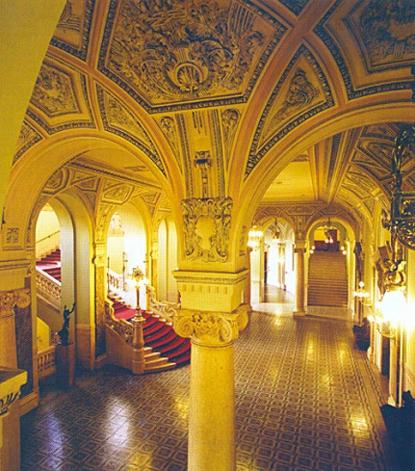2024. November 22. Friday
Visitor Centre of the National Bank of Hungary - Budapest
|
|
Address: 1054, Budapest Szabadság tér 8.
Phone number: (1) 428-2751
E-mail: sajto@mnb.hu
Opening hours: Closed!
|
This sectioín is divided into two parts. The first deals with the history of the monumental main building designed by Ignác Alpár, which dates hack to the period before the establishment of the independent bank itself. The second focuses on the main periods of the Banks history from its formation in 1924 to the present.

Following demolition of the despised 'Neugebäude' building, originally used as barracks and a prison, Ignác Alpár won the Austrian-Hungarian Banks tender to design a modern hank in its place. The building's main feature is its monumentality (similarly to a number of other buildings in Budapest designed by Alpár), with a mixture of antique and oriental elements, characteristic of lile period of late historicism. In designing the interior of the bank, Alpár paid close attention to modern solutions serving the functions of a central bank as well as to artistic detail, best represented by Miksa Róth's glass windows.
The ninth point in the demands put forth in the 1848 Hungarian revolution simply states: the National Bank. It was, however, not until 1924 that the institution was finally formed under the chairmanship of Sándor Popovics. The Bank faced numerous difficulties and underwent many changes during the hard years of depression and World War II, followed by hyperinflation, the introduction of a planned economy and the changes in Hungary's political system.
The Central Bank Act modified in 2001 guarantees the Bank's full independence and defines its primary objectives. The Bank's core objective is to achieve and maintain price stability. A great challenge in the gars to come is posed by the introduction of the euro, the common European currency.

Following demolition of the despised 'Neugebäude' building, originally used as barracks and a prison, Ignác Alpár won the Austrian-Hungarian Banks tender to design a modern hank in its place. The building's main feature is its monumentality (similarly to a number of other buildings in Budapest designed by Alpár), with a mixture of antique and oriental elements, characteristic of lile period of late historicism. In designing the interior of the bank, Alpár paid close attention to modern solutions serving the functions of a central bank as well as to artistic detail, best represented by Miksa Róth's glass windows.
The ninth point in the demands put forth in the 1848 Hungarian revolution simply states: the National Bank. It was, however, not until 1924 that the institution was finally formed under the chairmanship of Sándor Popovics. The Bank faced numerous difficulties and underwent many changes during the hard years of depression and World War II, followed by hyperinflation, the introduction of a planned economy and the changes in Hungary's political system.
The Central Bank Act modified in 2001 guarantees the Bank's full independence and defines its primary objectives. The Bank's core objective is to achieve and maintain price stability. A great challenge in the gars to come is posed by the introduction of the euro, the common European currency.
